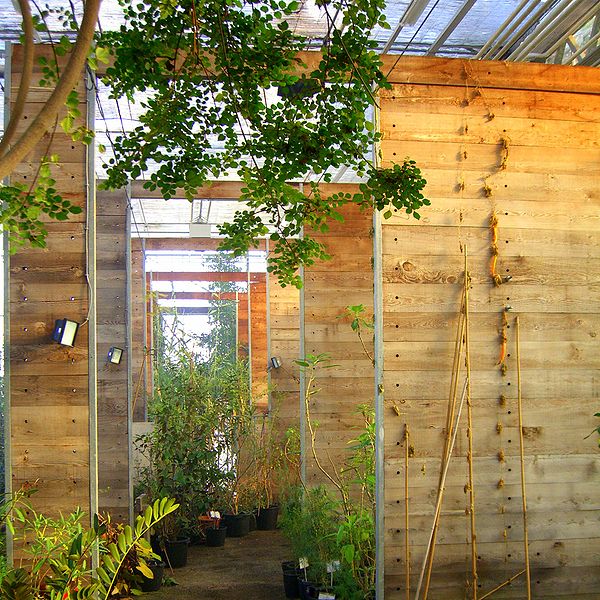The Softwood Lumber Board (SLB) and the Binational Softwood Lumber Council (BSLC) congratulated the U.S. Department of Agriculture on the formal launch of the U.S. Tall Wood Building Prize Competition.
The competition invites U.S. developers, institutions, organizations and design teams willing to undertake an alternative solution approach to designing and building taller wood structures to submit entries for a prize of $2 million.
Following a funding initiative announced by the Obama Administration and the U.S. forestry industry through the USDA, SLB and BSLC earlier this year, the goal of the prize competition is to link rural U.S. technical expertise and products with evolving domestic and international market opportunities to showcase the application and sustainability of innovative wood-based structural building materials and solutions.
The objective of the competition is to identify proponents with building project(s) in the concept-, schematic- or design-development stage in the U.S. that can safely and successfully demonstrate the use of wood as a viable structural material in tall buildings.
Above and beyond the safety, environmental and economic benefits of wood, the initiative will challenge developers, designers, building officials, builders and manufacturers to further develop and refine specification and use of structural wood products - ultimately expanding the opportunity for new product and market development.
Marc Brinkmeyer, SLB Board Chair explained, “There is a breadth of wood-related building science, design and construction that’s underway internationally. In recent years we’ve seen a number of buildings over seven stories constructed around the world, including the 10-story Forte building in Melbourne, Australia and the 14-story Treet building in Bergen, Norway."
The opportunity to learn from what’s been done elsewhere, and build on it here in the U.S., is very exciting for our industry, our employees and communities. I am equally thrilled and appreciative of the partnership that industry has forged with the USDA on this competition, and am looking forward to seeing the great wood-based projects that will result. Wood truly is an optimal choice for the environment and economy.”
The competition is the first step of a new USDA and forest industry initiative that is designed to support rural U.S. communities. Submissions that meet the criteria of the competition will be evaluated by an expert panel of design and building professionals. The full Official Rules document, related background information and contact details can be found on the prize competition website.
Related Stories
Office Buildings | Mar 21, 2024
BOMA updates floor measurement standard for office buildings
The Building Owners and Managers Association (BOMA) International has released its latest floor measurement standard for office buildings, BOMA 2024 for Office Buildings – ANSI/BOMA Z65.1-2024.
Healthcare Facilities | Mar 18, 2024
A modular construction solution to the mental healthcare crisis
Maria Ionescu, Senior Medical Planner, Stantec, shares a tested solution for the overburdened emergency department: Modular hub-and-spoke design.
Codes and Standards | Mar 18, 2024
New urban stormwater policies treat rainwater as a resource
U.S. cities are revamping how they handle stormwater to reduce flooding and capture rainfall and recharge aquifers. New policies reflect a change in mindset from treating stormwater as a nuisance to be quickly diverted away to capturing it as a resource.
Plumbing | Mar 18, 2024
EPA to revise criteria for WaterSense faucets and faucet accessories
The U.S. Environmental Protection Agency (EPA) plans to revise its criteria for faucets and faucet accessories to earn the WaterSense label. The specification launched in 2007; since then, most faucets now sold in the U.S. meet or exceed the current WaterSense maximum flow rate of 1.5 gallons per minute (gpm).
MFPRO+ New Projects | Mar 18, 2024
Luxury apartments in New York restore and renovate a century-old residential building
COOKFOX Architects has completed a luxury apartment building at 378 West End Avenue in New York City. The project restored and renovated the original residence built in 1915, while extending a new structure east on West 78th Street.
Multifamily Housing | Mar 18, 2024
YWCA building in Boston’s Back Bay converted into 210 affordable rental apartments
Renovation of YWCA at 140 Clarendon Street will serve 111 previously unhoused families and individuals.
Healthcare Facilities | Mar 17, 2024
5 criteria to optimize medical office design
Healthcare designers need to consider privacy, separate areas for practitioners, natural light, outdoor spaces, and thoughtful selection of materials for medical office buildings.
Construction Costs | Mar 15, 2024
Retail center construction costs for 2024
Data from Gordian shows the most recent costs per square foot for restaurants, social clubs, one-story department stores, retail stores and movie theaters in select cities.
Architects | Mar 15, 2024
4 ways to streamline your architectural practice
Vessel Architecture's Lindsay Straatmann highlights four habits that have helped her discover the key to mastering efficiency as an architect.
Healthcare Facilities | Mar 15, 2024
First comprehensive cancer hospital in Dubai to host specialized multidisciplinary care
Stantec was selected to lead the design team for the Hamdan Bin Rashid Cancer Hospital, Dubai’s first integrated, comprehensive cancer hospital. Named in honor of the late Sheikh Hamdan Bin Rashid Al Maktoum, the hospital is scheduled to open to patients in 2026.

















